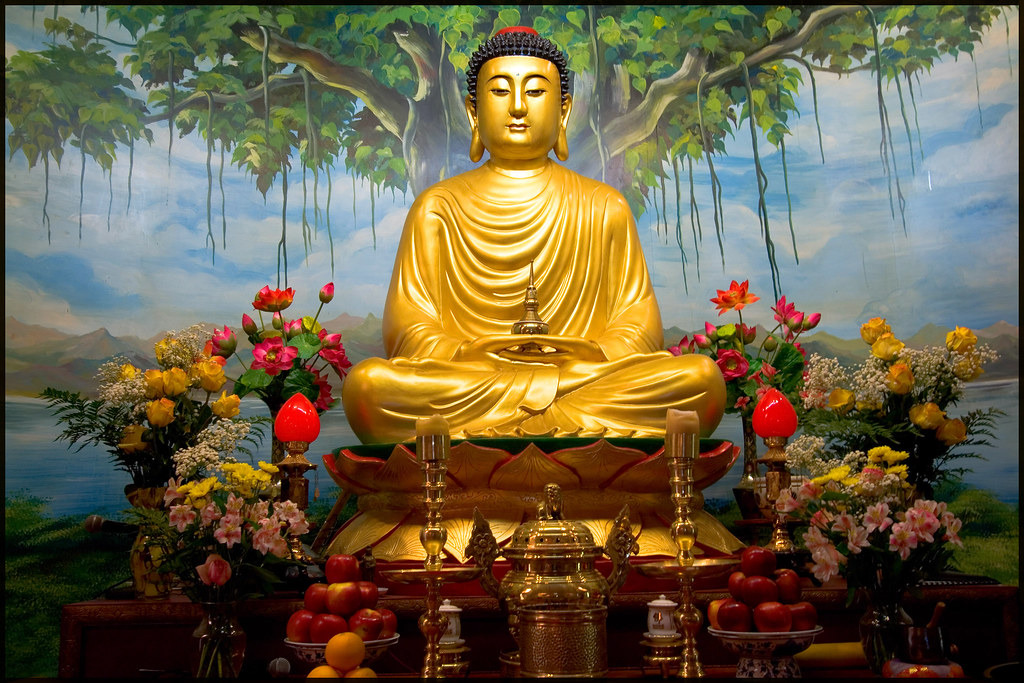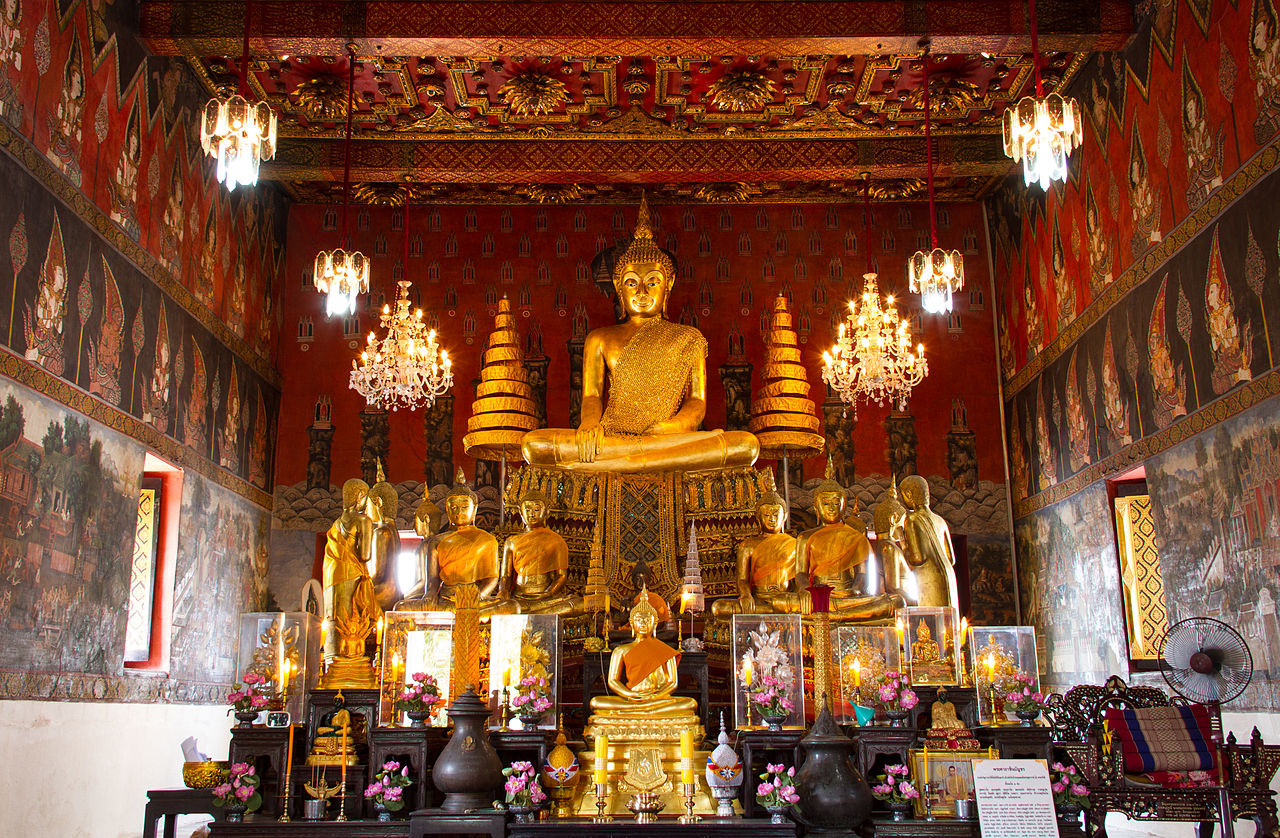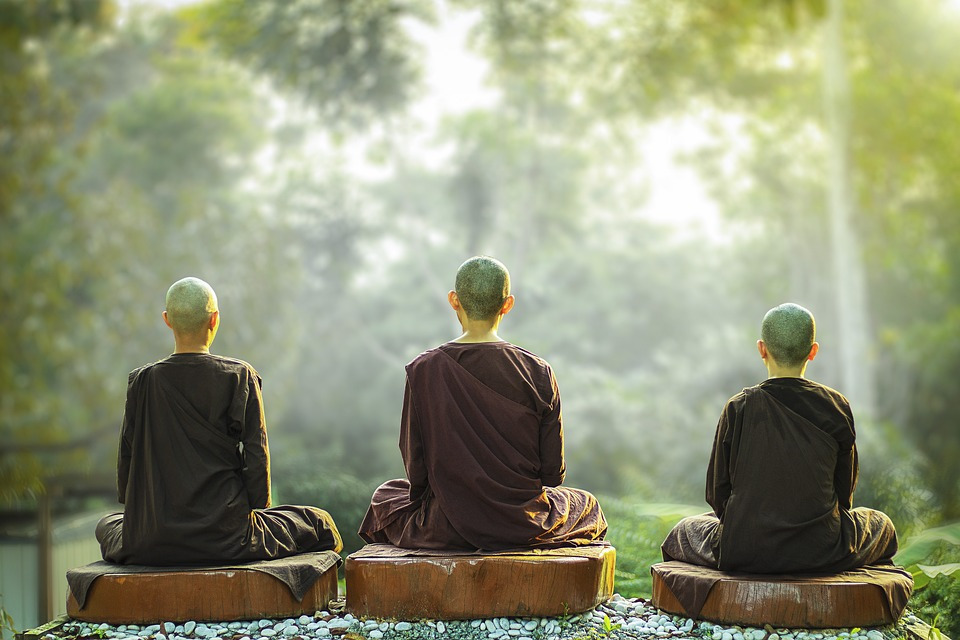Buddhism is the study of Buddha’s teachings on the nature of reality and the cosmos. Before the 1950s, becoming a Buddhist was only found in the east.
Because so many individuals have followed the Buddhist road and succeeded, there are many questions as to how to become a Buddhist these days.
One day, if you are among those interested in pursuing this path, you can join the Buddha’s order of disciples formally.
The guide below will help!
1. Know The Basics

There are a few elements to consider before deciding whether to become a Buddhist. It is required first to embrace all of the Buddhist teachings.
Understanding The Glossary Of Buddhism
Some Buddhist concepts and words need clear English equivalents that capture their full scope. Understanding the Glossary of Buddhism will make it much simpler to comprehend what you read.
Read About The Historical Founder Of Buddhism
Buddhists believe that while suffering and rebirth are inevitable aspects of human existence, you may end this cycle by achieving enlightenment.
The first individual to attain this level of enlightenment was Siddhartha Gautama, often known as the Buddha.
So, to become a Buddhist, you must study Siddhartha Gautama’s life. As a prince, Gautama was born into a prosperous family in modern-day Nepal.
Despite leading a comfortable life, Gautama was struck by human misery. He became known as the “awakened one” after discovering the route to enlightenment, which led him away from the agony of suffering and reincarnation and toward the path of enlightenment.
Studying Four Noble Truths
The Four Noble Truths distill one of Buddhism’s most fundamental ideas.
- The truth of suffering: Suffering is a necessary and inescapable part of life. This suffering includes the most severe discomfort, ailment, and trauma we can all fathom.
- The truth of the cause of suffering: Desire and ignorance are the causes of pain, according to Buddhism. The three demands that are unsatisfiable according to Buddhist definitions of desire are the need for pleasure, material goods, and immortality. Thus, wanting them will lead to suffering.
- The truth of the end of suffering: Buddhists are confident that His teachings would enable them to have the same experience as the Buddha, who did discover a way to stop suffering. The secret to stopping suffering is eliminating all desire, malice, and ignorance.
- The truth of the path that leads to the end of suffering: The Eightfold Path is the path that leads to the cessation of suffering.
Like an elephant’s footprint might include all other footed things on earth, the four noble truths cover the whole teaching. It is helpful to consider these four facts as experience categories rather than propositions.
Understanding these four categories is the primary goal of studying the four noble truths. Applying them to experience allows one to behave appropriately toward each type and achieve the highest, most complete level of enjoyment.
Understanding Noble Eightfold Path
The three central tenets of Buddhist practice are divided into eight components that make up the noble eightfold path. The Buddha always taught the eightfold road; even now, his disciples still find his teachings to be clear and helpful.
The noble eightfold path contains the substance of the thousands of discourses dispersed throughout the Buddhist texts. They are all interconnected, and each aids in the development of the others.
Taking Five Precepts
The Five-fold Precepts are a component of the Affirmation and Ordination procedures. They are not laws or commands but standards for moral behavior that demonstrate our commitment to leading awakened and obedient lives.
The Precepts can preserve life and beautify our lives. They enable us the freedom to react to both the gifts and difficulties of life with compassion.
We are enabled to practice them better and inspired to advance in the path of peace, joy, and enlightenment via the action of Great Compassion and our skillful diligence. They serve as the cornerstone for a happy person, family, and society.
These Precepts guide us in avoiding errors that result in pain, anxiety, and despair and instead help us comprehend and care for one another and our lost and suffering planet.
Building Your Belief In Reincarnation And Nirvana
The transmigration of the soul from one life form to another is known as reincarnation. Buddhists hold that once a sentient creature passes away, they are reborn into a new existence and that this cycle of birth and death lasts forever.
Every Buddhist has Nirvana as their ultimate objective. When one is freed from the constraints of the earthly world, one experiences this happiness.
It is the end outcome of the soul’s transmigration from the self and the condition of suffering into universalism. To end rebirth and reach Nirvana is one of Buddhism’s key objectives.
Understand Karma
Because karma decides where and when a creature will be reincarnated, reincarnation and Nirvana are closely related concepts. The good or evil deeds committed in this lifetime and prior lifetimes make up karma.
Depending on the intended timing of the impacts, karma may have positive or negative repercussions on a creature.
2. Deciding On Your Buddhist School
Theravada and Mahayana are now the two most widely practiced Buddhist schools. They should be viewed as manifestations of the real Buddha’s message.
Theravadins, who may be considered the most orthodox branch of Buddhism, hold that you can find the oldest recorded teachings of the Buddha in Pali.
This school stresses a contemplative approach to changing consciousness and accepts the human features of the Buddha. A psychological understanding of human nature distinguishes it.
The Mahayana serves as an umbrella organization for a wide range of schools. These schools teach that the only road to enlightenment is to gaze inside, not externally.
3. Taking Refuge

A Buddhist can be anyone. Finding a Buddhist center nearby where you may seek refuge is the simplest option.
Buddhists of all stripes frequently participate in a ritual known as “taking shelter in the three jewels.”
In Buddha
Buddha is a Buddhist term for the person who has attained enlightenment and offered lessons to the populace out of a profound desire to help end suffering.
One begins the process of becoming a Buddhist by seeking refuge in Buddha.
In Dhamma
Dharma, the second component of seeking refuge, directs people to overcome their wants and ignorance to free themselves from the cycle of birth and death.
Dharma may be a safeguard for one’s mind and heart and a means of moving toward a stable path.
In Sangha
Sangha is a group of people traveling the same road to achieving freedom from suffering and is the last stage of seeking refuge. Together, practicing Buddhism can aid in developing discipline.
3. Becoming a Buddhist

The Affirmation Ceremony serves to commemorate the choice to convert to Buddhism formally.
First, laity groups like Shin Buddhism are the only ones who use the Affirmation Ceremony. The participant publicly affirms their orientation and commitment to the Buddha, Dharma, and Sangha in this form of personal religious confirmation.
To participate in this ceremony, one must complete a few foundational courses at the Buddhist Faith Fellowship.
To participate in such a significant event that might change a person’s life, one should have some knowledge of the Buddha’s life, teachings, and practices.
4. Practicing Buddhism In Daily Life

The most crucial aspect of Buddhism is understanding, which takes time to acquire. So don’t go into Buddhism hastily.
Please select after considering it, taking your time, and asking questions. The Buddha was concerned about having few followers.
He was concerned that individuals should adhere to his ideas after conducting thorough research, carefully weighing the evidence, and, most importantly, after having a personal experience.
Practicing Meditation
As we practice meditation, we become accustomed to experiencing less upsetting feelings and more happiness and clarity.
Then, we apply the viewpoint gained through meditation to everyday situations.
Join A Buddhist Sangha
Join a Buddhist sangha, help them, be helped by them, and keep learning more about the teachings of the Buddha. Learn about the dharma, put it into practice, and consistently go to talks and gatherings.
FAQs
Can Buddhists drink alcohol?
Buddhism advises against using alcohol or other drugs since they might lead to irresponsibility. As a result, those who hold a solid Buddhist conviction could be less likely to drink.
Can anyone be Buddhist?
A Buddhist can be anyone. Buddhism is not something one must “become” or that one’s parents must practice. Any color, nation, socioeconomic status, gender, etc., are permissible.
What is forbidden in Buddhism?
The commandments are vows to refrain from committing murder, stealing, engaging in sexual misbehavior, lying, and becoming drunk. According to Buddhist teaching, they are designed to help people grow as people so they might advance toward enlightenment.
Final Thoughts
So, how to become a Buddhist? One does not have to do any particular robes, alter their eating routines, give up their financial goods, or engage in social life.
Changing one’s insight on whatever is going on in one’s environment is all it takes to become a Buddhist. I hope you will find a way to the Buddha’s world.

